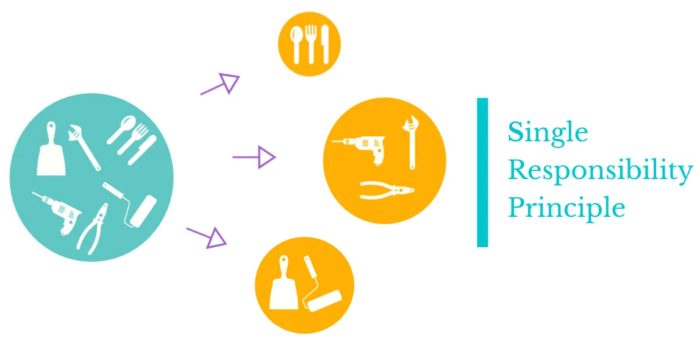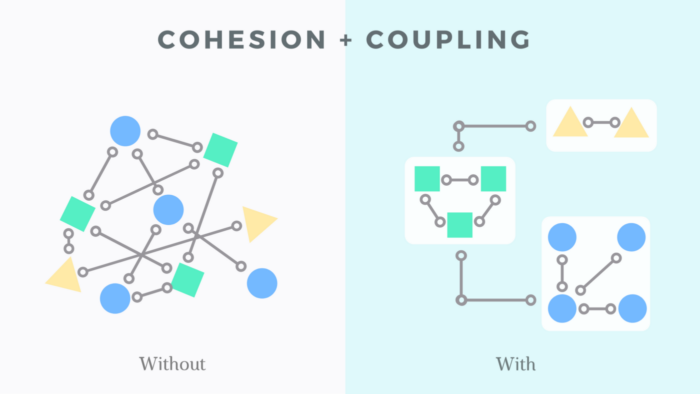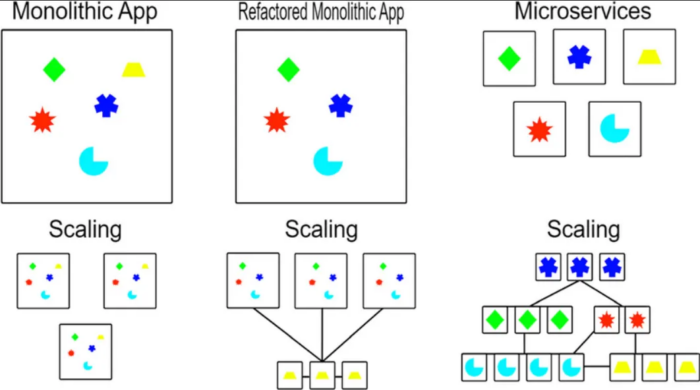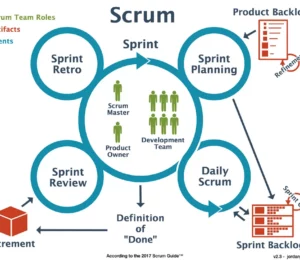Microservices Design Principles for Well-Crafted Architectures
- March 06, 2024
- 10908 Unique Views
- 5 min read
- Problem: Tight coupling leads to fragility - a change in one microservice breaks connected services.
Introduction to Microservices Design Principles
Welcome back to the second part of our Microservice Journey series! In this edition, we will delve into the core principles of microservice design principles, including the important topics of coupling and cohesion in Object-Oriented Programming (OOP).
This innovative approach to software system development prioritizes modularity and scalability, and understanding coupling and cohesion is essential for improving coding skills and designing architecture.
If you missed the first part, you can catch up here: The Evolution of Microservices with SOA
Let's explore the following concepts in detail:
Fundamental Principles of Microservices Design
- Single Responsibility Principle
- Loose Coupling and High Cohesion
- Scalability and Resilience
- Service Autonomy and Independence
- Evolutionary Design and Continuous Improvement
Single Responsibility Principle: Why Should Your Microservices Focus on a Single Capability?

Problem: Managing multiple responsibilities within a microservice can lead to difficulties in maintenance and comprehension, much like a jack of all trades but a master of none.
- Solution: Apply the Single Responsibility Principle - each microservice should focus on one single capability that it masters.
- Benefits: This specialization makes microservices easier to comprehend, test, scale, and upgrade. It's like having a coordinated team where each member excels at their role.
- Pitfalls: Violating this principle leads to complex services where responsibilities are unclear and difficult to manage.
- Example: An e-commerce platform has separate microservices for user authentication, product catalog, shopping cart, and payment processing. Here's a simplified example of the AuthenticationService:
public class AuthenticationService {
public void authenticateUser(User user) {
// Authenticate user
// This could involve checking the user's credentials,
// comparing them with stored data, and returning a response that indicates whether the authentication was successful.
}
}
- Real-World: Amazon and Netflix decompose their platforms into focused microservices, achieving a high level of specialization, much like a team of specialists.
Loose Coupling and High Cohesion: How To Avoid Tight Coupling and Low Cohesion?

Cohesion is a measure of the number of relationships that parts of a component have with each other.
High cohesion means that: All of the parts that are needed to deliver the component's functionality are included in the component.
Coupling is a measure of the number of relationships that one component has with other components in the system.
Low coupling means that: Components do not have many relationships with other components.
Problem: Tight coupling leads to fragility - a change in one microservice breaks connected services.
Low cohesion results in unclear responsibilities.
- Solution: Apply loose coupling and high cohesion. In a loosely coupled system, each component is independent and changes in one will not affect the others. High cohesion means that each component is responsible for a single task.
- Benefits: Loose coupling enables independent deployments and resilience.
High cohesion improves maintainability by keeping related concerns together.
- Pitfalls: Excessive dependencies create bottlenecks, and unfocused services are difficult to maintain and change.
Example: In a User Management service profiles can work independently from an Order History service.
// didcated service for user management.
public class User {
private Long id;
private String name;
}
public class Order {
private Long quantity;
private Date orderDate;
}
- Real World: Uber adopted loose coupling and high cohesion for services like Payment, Trip History, and Driver Profile, enabling each service to evolve independently.
Scalability and Resilience: Is Your Architecture Ready for Traffic Surges and Failures?

Problem: A system must handle spikes in traffic and recover from failures to ensure reliability. If a system can't handle increased workloads or recover from issues, it won't be reliable.
- Solution: Build scalability and resilience from the start.
Scalability: means the system can handle increased loads by proportionally adding resources.
Resilience refers to the system's ability to recover swiftly from failures.
Tools like Spring Boot and Netflix Eureka can help create microservices that scale and recover effectively.
- Benefits: Scalability accommodates varying loads. Resilience minimizes downtime during outages.
- Pitfalls: Fragile systems fail at peak loads. Tight coupling spreads failures across services.
- Example: Netflix uses horizontal scaling, redundancy, and circuit breakers to improve resilience. Similarly, an increase in viewership in a movie streaming service should not result in buffering or downtime.
- Real World: Amazon handles massive traffic surges on Black Friday by leveraging these principles of scalable and resilient services.
Service Autonomy and Independence: How To Streamline Evolution of Microservices?
Problem: Change cycles slow down if updating one microservice requires changing others. If changes in one microservice necessitate changes in others, it slows down development and complicates system maintenance.
- Solution: Architect microservices to be independent and self-contained.
Each microservice should be designed to work and evolve independently.
- Benefits: Autonomous services can be deployed, upgraded, and scaled separately.
- Pitfalls: Tight coupling inhibits isolated evolution and creates bottlenecks.
- Example: In Uber's system, the User Management service can evolve separately from the Order Processing service, allowing for independent modifications. Similarly, consider a User microservice in an e-commerce application. Any changes in this service should not affect other services like the Product Catalog or Shopping Cart services.
- Real World: Uber accelerated feature development by enabling teams to modify microservices independently.
Evolutionary Design and Continuous Improvement

In a rapidly evolving technological landscape, systems must adapt and improve continuously.
Evolutionary design allows for the gradual development and refinement of the system, while continuous improvement ensures that the system constantly adapts to changing requirements and environments.
Problem: Technology, user requirements, and business goals change over time. If a system is not designed to evolve, it will become outdated, leading to increased maintenance costs, decreased user satisfaction, and potential loss of business.
- Solution: Implement evolutionary design principles and adopt a culture of continuous improvement. Systems should be designed in a way that allows them to be updated, improved, and extended over time. This can be complemented by regular reviews, feedback mechanisms, and a willingness to refactor and improve the code.
- Benefits: Systems designed to evolve can better adapt to changing requirements, which can lead to increased longevity, improved user satisfaction, and a competitive edge. Continuous improvement allows teams to learn, innovate, and improve their processes, leading to better productivity and quality.
- Pitfalls: Without a clear strategy for evolution and improvement, systems can become complex and difficult to maintain. Furthermore, without a culture that supports learning and improvement, teams may become complacent and resistant to change.
- Example: Consider a Payment microservice in an e-commerce application. Initially, it might only support credit card payments. However, as the platform grows and user needs change, the system should be designed to easily incorporate additional payment methods such as PayPal, Bitcoin, etc. This is an example of evolutionary design.
- Real World: Amazon's transition from a monolithic architecture to a microservices architecture is a good example of evolutionary design and continuous improvement. They continuously evolved their architecture to support their rapidly growing business.
Conclusion
In conclusion, designing microservices is a marathon, not a sprint.
The principles of single responsibility, loose coupling, high cohesion, resilience, and scalability aid in building robust, scalable, and maintainable systems.
These principles are guidelines, adaptable to your specific needs. The ultimate aim is not just to produce code, but to deliver value. Understanding and applying these principles helps in creating systems that align with your business goals.
We encourage you to apply these principles in your work and to share your experiences in the comments below. Let's learn together!
Stay tuned for our next article!
Don't hesitate to share your experiences or ask any questions in the comments below. Let's learn together!
Resources for further reading:
Don’t Forget to Share This Post!











Comments (1)
Java Annotated Month-to-month – April 2024
2 years ago[…] Microservices Design Ideas for Nicely-Crafted Structure – This text focuses on the basics of microservice structure and Object-Oriented Programming, particularly addressing how companies work together (coupling) and the way they’re organized (cohesion). […]